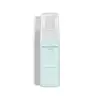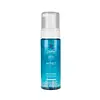What's inside
What's inside
 Key Ingredients
Key Ingredients

 Benefits
Benefits

 Concerns
Concerns

 Ingredients Side-by-side
Ingredients Side-by-side

Water
Skin ConditioningPEG-6 Caprylic/Capric Glycerides
EmulsifyingSodium Laureth Sulfate
CleansingMaris Aqua
HumectantGlycerin
HumectantPhenoxyethanol
PreservativeCocamidopropyl Betaine
CleansingCoco-Glucoside
CleansingPropylene Glycol
HumectantParfum
MaskingSodium Benzoate
MaskingPotassium Sorbate
PreservativeLactic Acid
BufferingPanthenol
Skin ConditioningMalachite Extract
AntioxidantSilica
AbrasiveHexyl Cinnamal
PerfumingSodium Lauroyl Oat Amino Acids
CleansingLimonene
PerfumingLinalool
PerfumingUrea
BufferingAlpha-Isomethyl Ionone
PerfumingGlycyrrhetinic Acid
Skin ConditioningAlcohol
AntimicrobialAllantoin
Skin ConditioningAsparagopsis Armata Extract
Skin ProtectingCitric Acid
BufferingPantolactone
HumectantAlgae Extract
EmollientCaprylyl Glycol
EmollientEthylhexylglycerin
Skin ConditioningDisodium EDTA
Water, PEG-6 Caprylic/Capric Glycerides, Sodium Laureth Sulfate, Maris Aqua, Glycerin, Phenoxyethanol, Cocamidopropyl Betaine, Coco-Glucoside, Propylene Glycol, Parfum, Sodium Benzoate, Potassium Sorbate, Lactic Acid, Panthenol, Malachite Extract, Silica, Hexyl Cinnamal, Sodium Lauroyl Oat Amino Acids, Limonene, Linalool, Urea, Alpha-Isomethyl Ionone, Glycyrrhetinic Acid, Alcohol, Allantoin, Asparagopsis Armata Extract, Citric Acid, Pantolactone, Algae Extract, Caprylyl Glycol, Ethylhexylglycerin, Disodium EDTA
Water
Skin ConditioningButylene Glycol
Humectant1,5-Pentanediol
SolventPEG-80 Glyceryl Cocoate
EmulsifyingPropylene Glycol
HumectantPEG-6 Caprylic/Capric Glycerides
EmulsifyingPolysorbate 20
EmulsifyingSodium Myreth Sulfate
CleansingSodium Lauroyl Glutamate
Chlorhexidine Digluconate
AntimicrobialPiroctone Olamine
PreservativeSuccinic Acid
BufferingHydroxypropyl Guar Hydroxypropyltrimonium Chloride
PEG-60 Almond Glycerides
EmulsifyingNordihydroguaiaretic Acid
AntioxidantOleanolic Acid
Skin ConditioningCaprylyl Glycol
EmollientLactic Acid
BufferingGlycerin
HumectantCarbomer
Emulsion StabilisingParfum
MaskingTrisodium Ethylenediamine Disuccinate
Water, Butylene Glycol, 1,5-Pentanediol, PEG-80 Glyceryl Cocoate, Propylene Glycol, PEG-6 Caprylic/Capric Glycerides, Polysorbate 20, Sodium Myreth Sulfate, Sodium Lauroyl Glutamate, Chlorhexidine Digluconate, Piroctone Olamine, Succinic Acid, Hydroxypropyl Guar Hydroxypropyltrimonium Chloride, PEG-60 Almond Glycerides, Nordihydroguaiaretic Acid, Oleanolic Acid, Caprylyl Glycol, Lactic Acid, Glycerin, Carbomer, Parfum, Trisodium Ethylenediamine Disuccinate
Ingredients Explained
These ingredients are found in both products.
Ingredients higher up in an ingredient list are typically present in a larger amount.
Caprylyl Glycol is a humectant and emollient, meaning it attracts and preserves moisture.
It is a common ingredient in many products, especially those designed to hydrate skin. The primary benefits are retaining moisture, skin softening, and promoting a healthy skin barrier.
Though Caprylyl Glycol is an alcohol derived from fatty acids, it is not the kind that can dry out skin.
This ingredient is also used as a preservative to extend the life of products. It has slight antimicrobial properties.
Learn more about Caprylyl GlycolGlycerin is already naturally found in your skin. It helps moisturize and protect your skin.
A study from 2016 found glycerin to be more effective as a humectant than AHAs and hyaluronic acid.
As a humectant, it helps the skin stay hydrated by pulling moisture to your skin. The low molecular weight of glycerin allows it to pull moisture into the deeper layers of your skin.
Hydrated skin improves your skin barrier; Your skin barrier helps protect against irritants and bacteria.
Glycerin has also been found to have antimicrobial and antiviral properties. Due to these properties, glycerin is often used in wound and burn treatments.
In cosmetics, glycerin is usually derived from plants such as soybean or palm. However, it can also be sourced from animals, such as tallow or animal fat.
This ingredient is organic, colorless, odorless, and non-toxic.
Glycerin is the name for this ingredient in American English. British English uses Glycerol/Glycerine.
Learn more about GlycerinLactic Acid is another well-loved alpha hydroxy acid (AHA). It is gentler than glycolic acid but still highly effective.
Its main role is to exfoliate the surface of the skin by loosening the “glue” that holds dead skin cells together. Shedding those old cells leads to smoother, softer, and more even-toned skin.
Because lactic acid molecules are larger than glycolic acid, they don’t penetrate as deeply. This means they’re less likely to sting or irritate, making it a great choice for beginners or those with sensitive skin.
Like glycolic acid, it can:
Lactic acid also acts as a humectant (like hyaluronic acid). It can draw water into the skin to improve hydration and also plays a role in the skin's natural moisturizing factor (NMF) in the form of sodium lactate.
Studies show it can boost ceramide production to strengthen the skin barrier and even help balance the skin’s microbiome.
To get results, choose products with a pH between 3-4.
Lower strengths (5-12%) focus on surface exfoliation; higher strengths (12% and up) can reach deeper in the dermis (deeper, supportive layer) to improve skin texture and firmness over time.
Though it was originally derived from milk, most modern lactic acid used in skincare is vegan. It is made through non-dairy fermentation to create a bio-identical and stable form suitable for all formulations.
When lactic acid shows up near the end of an ingredient list, it usually means the brand added just a tiny amount to adjust the product’s pH.
Legend has it that Cleopatra used to bathe in sour milk to help reduce wrinkles.
Lactic acid is truly a gentle multitasker: it exfoliates, hydrates, strengthens, and brightens. It's a great ingredient for giving your skin a smooth, glowing, and healthy look without the harshness of stronger acids.
Read more about some other popular AHA's here:
Learn more about Lactic AcidParfum is a catch-all term for an ingredient or more that is used to give a scent to products.
Also called "fragrance", this ingredient can be a blend of hundreds of chemicals or plant oils. This means every product with "fragrance" or "parfum" in the ingredients list is a different mixture.
For instance, Habanolide is a proprietary trade name for a specific aroma chemical. When used as a fragrance ingredient in cosmetics, most aroma chemicals fall under the broad labeling category of “FRAGRANCE” or “PARFUM” according to EU and US regulations.
The term 'parfum' or 'fragrance' is not regulated in many countries. In many cases, it is up to the brand to define this term.
For instance, many brands choose to label themselves as "fragrance-free" because they are not using synthetic fragrances. However, their products may still contain ingredients such as essential oils that are considered a fragrance by INCI standards.
One example is Calendula flower extract. Calendula is an essential oil that still imparts a scent or 'fragrance'.
Depending on the blend, the ingredients in the mixture can cause allergies and sensitivities on the skin. Some ingredients that are known EU allergens include linalool and citronellol.
Parfum can also be used to mask or cover an unpleasant scent.
The bottom line is: not all fragrances/parfum/ingredients are created equally. If you are worried about fragrances, we recommend taking a closer look at an ingredient. And of course, we always recommend speaking with a professional.
Learn more about ParfumThis ingredient is derived from caprylic and capric acids. It is an emulsifier with emollient properties.
According to the manufacturer, it is hydrophilic and soluble in aqueous solutions (water). They also state this ingredient is stable in a medium pH range (~5 - 8).
As an emulsifier, it helps make oils and oil-soluble ingredients more soluble in water.
Learn more about PEG-6 Caprylic/Capric GlyceridesPropylene Glycol is an odorless, colorless liquid. As a humectant, it helps skin retain moisture. It also aids in delivering active ingredients.
Another role of this ingredient is preventing a product from melting or freezing. Propylene glycol also adds antimicrobrial properties to a product, elongating product lifespan.
This ingredient is considered an organic alcohol and commonly added into both cosmetics and foods.
Those with sensitive skin or conditions may develop a rash when using this ingredient.
Learn more about Propylene GlycolWater. It's the most common cosmetic ingredient of all. You'll usually see it at the top of ingredient lists, meaning that it makes up the largest part of the product.
So why is it so popular? Water most often acts as a solvent - this means that it helps dissolve other ingredients into the formulation.
You'll also recognize water as that liquid we all need to stay alive. If you see this, drink a glass of water. Stay hydrated!
Learn more about Water